Today 2023-02-04


Early in January of 2014, Indy Star Reporter Michael Anthony Adams issued a challenge to Indiana residents for the new year:
New Year’s resolutions are rarely acted on. I’m guilty of it, and you’re guilty of it. The trick is to have support, which is exactly what #Read26Indy is. But instead of having a few friends hold you accountable for your vows, you have an entire city.
The pledge: I’m calling on every Hoosier to read 26 books in 2014. Think of it as your informal education, a collective challenge. One book every two weeks. That’s 20 pages a day (if you figure that the average novel is 280-300 pages long). When you start a book, let everyone know about it on Twitter by using the hashtag #Read26Indy. Feel like telling us what you’re drinking while you’re reading? Have at it, but use #Read26Indy. Can’t stand a character? Want to rant about it? #Read26Indy is your pedestal. The point is to read. Like Faulkner said, “Read, read, read. Read everything — trash, classics, good and bad.”
Can’t decide what to read? Tweet it out. #Read26Indy has already gathered a large following, and people are eager to tell you about their favorite books. I’ll also be keeping this page up-to-date with what I’m reading and I urge you to join our Goodreads group, #Read26Indy, to discuss your picks with other readers.
Part way through January, they mentioned that comic books count! I could finish in a couple weeks if I include them. For my personal challenge, I’ll note comic books but not count them against my official total. I’m going to pin this post to my main page and update as I add titles throughout the year.
So far my finished titles are:
This Is How You Lose Her
Author: Junot Diaz
Rated: 4 stars. Very well written with strong characters. I just had a hard time identifying with the protagonist, because all of his problems came through his own self-absorption.
The Goldfinch
Author: Donna Tartt
Rated: 5 stars. Everything I love about reading – being so caught up that I forget the rest of the world exists, wanting to highlight whole passages and re-read whole sections, frantically looking up quotes and references to get at additional layers of meaning – all come together here. The book I set down after the I finished the last page is a completely different one than I thought I was reading after the first chapter, and winding up in a different place than I expected and yet feeling like it all made sense and could be true is, I think, a hallmark of a truly skilled author.

But the book really shines when it leads you through understanding of gender and especially how people who don’t conform to the male/female gender binary see themselves in the world. It’s eye-opening and will change your perspective in a healthy way for yourself and the people around you.
It isn’t good manners to talk about the book before book club; in fact that is the first and second rules of book club. But I am a few pages away from the end of this book, and it’s not exactly a book that sits around waiting to be discussed, so the book club will probably forgive me, especially because I actually managed to finish a book for once instead of getting bored part way through and going off to look at comics instead. My ADD has gotten much worse over the last few years. My brain is shallow; I cannot help it.
So there are a number of things that you need to know about this book, and I’ll actually number them for you, just for entertainment, although none of these items actually takes priority over any other. Numbering shit is just fun.
Again cleaning out some old notes and writing, I came across some thoughts I had about the book “Gang Leader for a Day: A Rogue Sociologist Takes to the Streets” and the subsequent discussion we had about it in book club. I started to write this, but felt I needed to do some additional research to back up some of my ideas, and shelved it. Dunno if I’ll ever get around to doing the research, but the ideas I had are interesting, at least.
We were talking about the architecture of the Robert Taylor Homes, and how it was, to some extent ill-suited to Chicago and the climate, and about the galleries being built outside, etc. and I was thinking about that and what I have skimmed from the Christopher Alexander book “A Pattern Language” about how profoundly architectural components can affect us and how we interact as a family, a neighborhood and a community, etc., and it made me wonder if they had, when they had decided to build the projects, taken an entirely different approach to building for low-income families, whether there would have been an different outcome.
For example, the way the buildings were constructed had a lot of influence on how the people interacted as a community. People were required to live in a fashion that was more intimate than other communities might have been, and it forced dependencies on people like Mrs. Bailey that wouldn’t have existed in other settings.
Architecture also had a powerful effect on how the gangs were able to seize control of the buildings and use them – controlling halls and stairwells, using empty apartments, etc. I wondered if that wasn’t part of the difficulty the gangs had with establishing other places, like Iowa. They didn’t have as much control over their members because they didn’t have as much control over their locations.
That caused me to wonder whether the architecture of the projects actually contributed to the rise of the gangs and the influence of drugs throughout the community. Jane Jacobs in “The Death and Life of Great American Cities (Modern Library Series)” talks a extensively about how the city can curb criminal activity by sculpting the streetscapes so that people can see the street from their windows and keep an eye on what is going on.
Separately from those ideas, I was thinking about how easy it is for me to judge Mrs. Bailey and JT – because I have the freedom to be an ethical person because I have enough money to be moral. When the economic system you’re trapped in gives you absolutely no incentive to be moral when being moral can get you killed, and when there are additional powerful reasons — like survival — for you to engage in unethical and immoral behavior, you’re going to do what you need to. The odds are stacked against moral behavior and right conduct.
Sometime last year I managed to lose track of my reading list. I started to keep better track in January of this year, but I never managed to keep the list updated. So after 14 years of tracking every book I’ve read – I managed to lose track hopelessly. Ah well. I’m happier this way. Something about enforced routines made reading a chore instead of an escape. And every year the list of books I’d finished was depressingly shorter – less free time, more household repair obligations, a sense that what I was reading was on the lighter side and less worthy of examination and recording. All that plays into it, really.
I took two books with me to England:
1) The Night Climbers of Cambridge seemed appropriate, since I knew I’d be visiting the city. It was written pseudonymously by students of Cambridge University in the 1930s, about their adventures scaling the building walls of the various colleges in Cambridge.
The book is a cult classic and inspires the exploits of a band of modern-day dare-devils who have cheekily placed Santa hats on the spires of various chapels over the last several years. I picked up the book after hearing about their exploits in 2008, and this past year’s simultaneous placement of 4 hats on each spire of King’s College was a particularly noteworthy feat. I’ll have my photos edited soon of Kings College chapel, which will help explain why. I had hoped to get photos of some of the key drain pipes and chimneys involved, but alas, I only have photos of the buildings themselves. Too much to do in Cambridge in too little time.
2) Agatha Christie’s Secret Notebooks: Fifty Years of Mysteries in the Making — Curran was able to study 70+ notebooks that Christie wrote in over the years as she plotted out her mystery stories, and he details key discoveries about how she crafted some of the major stories. This books is a revelation – so fascinating to see behind the finished product and see how she worked. She would have an idea pop into her head and she would just noodle on it; sometimes a plot would spring directly to life, and sometimes she would continue to play with the idea for years before the completed story came about.
Because it was so interesting, I picked up a couple of Christie’s books from Toppings & Co. Books in Ely: Dead Man’s Folly. The added advantage of that was that I got book covers that aren’t available in the US – much nicer designs, frankly. I read nearly all of Christie’s mysteries as a teenager and still have copies of some of my favorites on my shelf at home. I particularly favored Tommy & Tuppence stories and so have all of them, and I loved Marple. Poirot? I liked him, but he wasn’t my favorite. Curran clearly loves him, though. Most of the novels he covers in the Secret Notebooks featured the mustachioed detective. After I returned home, I picked up seven more of the top ten Christie novels according to Curran – I already owned the other three. So I’ve been reading through those as well, and then flipping back and forth between the book an the novels.
Another great England acquisition was the third Stieg Larsson book – The Girl Who Kicked the Hornet’s Nest. I managed to get it and read it there in England before it was available in the US, which wasn’t much of an advantage (it was released here on May 24) except that I could taunt friends on Facebook. It was very good – he’s pretty great at keeping you riveted through lots of exposition between action scenes. Long, but I read through it without difficulty. I’d recommend highly the whole series.
And a couple other books I’ve read recently back here in the US, but set in Ely and surrounding villages, where we were staying. The first is The Nine Tailorsa Dorothy L. Sayers mystery set in a village church similar to the one in the village my sister lives in.
It was the inspiration for several mystery novels by author Jim Kelly about Ely and environs: The Water Clock and The Fire Baby are the first two I’ve read. Not bad reading, although his prose could use some polish, he has a rather bleak view of the area, and his books on the gritty side. But fun because I can picture streets he references and places he sets his scenes.
I’ve finished two of my Project Fill-in-the-gaps books – The Book Thief and Motherless Brooklyn, and filled in with some paperback mysteries and fun stuff. Right now I’m slogging through some titles for work, and enjoying the guilty pleasure of Ana Marie Cox’s thinly-veiled political fiction.
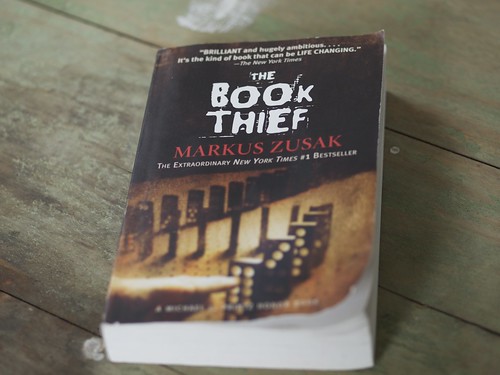
The Book Thief – Markus Zusak
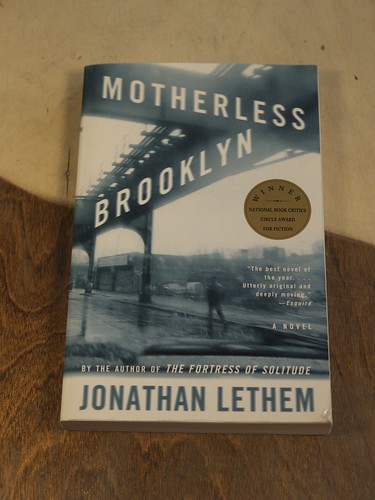
Motherless Brooklyn – Jonathan Lethem
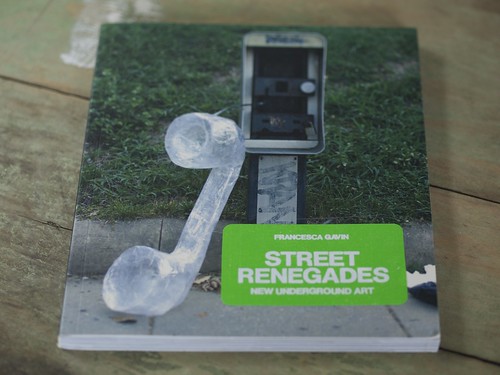
Street Renegades: New Underground Art – Francesca Gavin
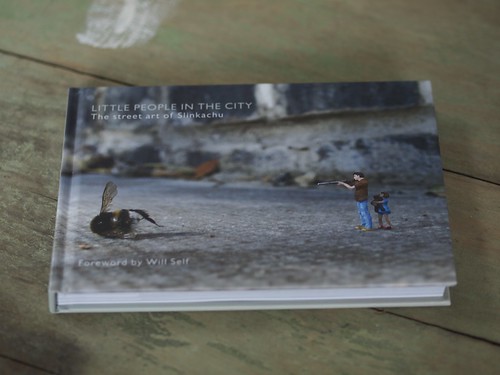
Little People in The City: The Street Art of Slinkachu
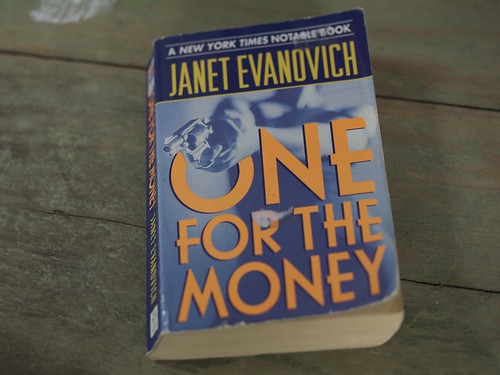
One for the Money – Janet Evanovich
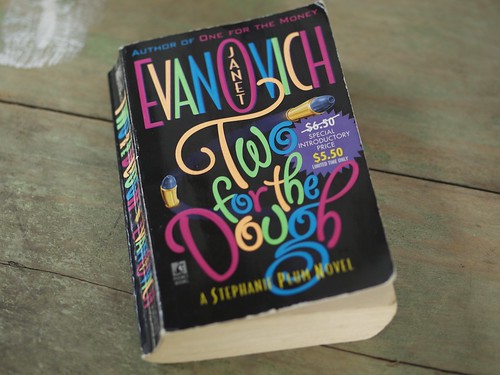
Two for the Dough – Janet Evanovich
What I’m Reading Now:
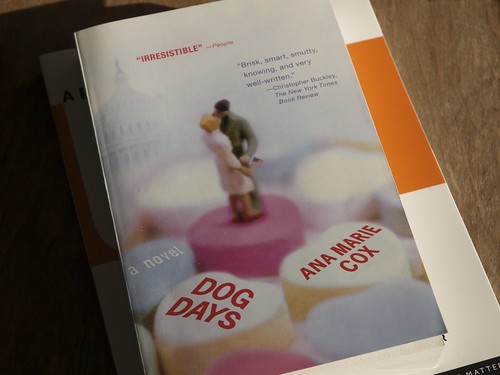
Dog Days – Ana Marie Cox

A Project Guide to UX Design – Russ Unger and Carolyn Chandler
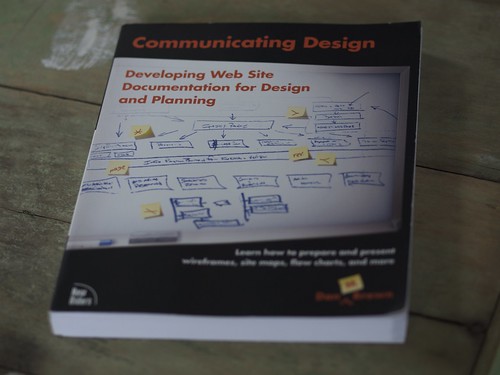
Communicating Design – by Dan Brown
Larry Burrows: Vietnam
by Larry Burrows
A classic, iconographic photography book. Burrows was a Life Magazine photographer covering the Vietnam war, and his images shot over 9 years helped shape the American public’s understanding and opinions about it. He was killed over Cambodia when his helicopter was shot down.
100 Photographs that Changed the World
by the editors of Life Magazine
Exactly what the title says; some of the most recognized and catalytic photos in human history.
Anonymous: Enigmatic Images from Unknown Photographers
by Robert Flynn Johnson and William Boyd
Another great book of photography; this one is a collection of beautiful, unusual and gorgeous “found” photos collected by the authors, gleaned from attics and estate sales.
The 13 Clocks
by James Thurber, (illust. Marc Simont, foreward by Neil Gaiman)
I checked this book out from the Ankeny public library when I was a little kid, and I’ve been looking for a copy to call my own ever since. It just recently came back into print, and I immediately ordered it.
Coraline
by Neil Gaiman
I haven’t seen the movie yet; unfortunately I missed it in 3-D, for which I heard rave reviews. The book was quite good, and I’m given what I’ve heard about the changed ending in the movie, I’m not sure I’ll like the movie as well.
Faking It
by College Humor
I’m only listing this because I read the damn thing, but I won’t link to it. It’s a misogynist piece of crap, and I’m rather ashamed it was published by our company. I’m rather shocked I read the whole thing, but I kept hoping it would get better. It’s didn’t; don’t bother.
The Unfinished Clue
by Georgette Heyer
I’ve been a huge fan of her Regency novels since I was a teen; I have almost all of them in my library and they show up on my reading lists here on the site repeatedly. But I’ve never read any of her mysteries. I’m glad I finally did; her sparkling, witty characterizations are present here, too. Light reading, but lots of fun.
I haven’t completed any of my Project Fill-in-the-gaps titles, but I’m well into two of them. And I have some unfinished reading from earlier this year that I want to complete as well. We’ll see how all that goes.
I had the time to get some extra reading in over the holidays, and I managed to add a couple of books to my list at the end of the year. And good ones, too.
The Big Book Of Lesbian Horse Stories
by Alisa Surkis and Monica Nolan
No, the horses aren’t lesbians. The lesbians love horses. But not in THAT way. Very much a comedic book — the cover is filled with racy, pulp-fiction-like quotes, that that’s the closest the book actually gets to racy; it’s a collection of rather sweet, very funny short stories about girls who love other girls and who also love horses.
Made to Stick: Why Some Ideas Survive and Others Die
by Chip Heath and Dan Heath
A great analysis of ideas that are successfully communicated and why they are unforgettable — what it takes to make your ideas stick. If you have anything to do with marketing, this is a must-read book; as I was reading it, I found myself wanting to give copies of it to people I thought would get a lot from it.
Outliers: The Story of Success
by Malcolm Gladwell
While many people have innate talents – the people who are truly Outliers are those who come from a background that nurtures their talent and gives them opportunities to practice what they have a passion for – and thousands of hours of practice make them truly great in their field. Publishers Weekly: “Gladwell tears down the myth of individual merit to explore how culture, circumstance, timing, birth and luck account for success–and how historical legacies can hold others back despite ample individual gifts.”
Stuff I’ve read lately:
Schulz and Peanuts: A Biography
by David Michaelis
Who knew that Charles Schulz was such a prickly pear? And a fascinating artist. His rise to prominence as a cartoonist occurred when I was a tiny tot in the late 60’s and early 70’s, and the perspective I had of the Peanuts cartoon from that age is thrown into quite a contrast by this biography — and for the better, I’d say. It’s interesting to discover that a cartoon I have such strong childhood memories of was originally aimed at and popular with the college students of it’s generation.
The Code of the Woosters
by P.G. Wodehouse
One of the few remaining Wodehouse books I haven’t read; funny as always.
The Digital Photography Book
by Scott Kelby
A really handy book for people who are picking up a DSLR camera for the first time and learning what it can do. Kelby leaves out the dry boring crap and tells you “here’s how I would set up my camera in this situation.”
Night Work (Kate Martinelli Mysteries)
by Laurie R. King
Fourth book in the series. I seem to be reading them backwards; I haven’t read the first 3 yet. That hasn’t impaired my enjoyment at all.
The problem I had with being unfocused and skipping from book to book seems to have passed, post-wedding. At one point, I believe I had 9 books partially read. I haven’t gone back to finish any of them, but started fresh with some lighter summer reading in order to carry paperbacks on the plane with me.
The Areas of My Expertise
by John Hodgman
John Hodgman is a writer and comedian who has appeared on the Daily Show and is the “PC” in the Mac/PC commercials from Apple. It’s a very funny book, but I think I’d prefer to hear him read this out loud though – his deadpan delivery is what really sells his offbeat humor.
Jane and His Lordship’s Legacy (Jane Austen Mysteries, book 8)
by Stephanie Barron
While I still can’t quite reconcile this mystery series’ rendition of Jane Austen with the woman I see in my mind’s eye after reading her biographies, the series is pretty entertaining.
Justice Hall (Mary Russell Novels)
by Laurie R. King
and
The Game (Mary Russell Novels)
by Laurie R. King
Looping back to pick up the two mysteries in the series that I skipped over accidentally. Justice Hall is the 6th in the Mary Russell series, and for those that may not have read my previous reviews, Mary is married to detective Sherlock Holmes. They’re pretty well written, and I enjoy Mary’s character, although Holmes seems at times to take a back seat and plot is sometimes a bit ambiguous.
The Somnambulist
by Jonathan Barnes
Wow. For a debut novel, this is a killer job. I really loved this book. Edward Moon is a British magician in Victorian London, with an unusual, hulking silent partner called “The Sonambulist” who participates in his acts and helps him solve the odd mystery on the side. Moon’s career is on the wane after years of popularity, mainly because his act has been the same for years and people have tired of seeing the same old thing. He’s drawn into the investigation of an actor’s murder, and manages to stumble into a full-blown conspiracy to destroy the city of London, which he must quickly get to the heart of before doom strikes the city. The book is funny, quirky and full of Dickensian-like oddballs. Can’t wait for the sequel. I hope there is one.
The Secret of Lost Things
by Sheridan Hay
Rosemary Savage comes to America at age 18 to settle in New York City after the death of her mother in her home country of Tasmania. She finds a job in the Arcade Bookshop (similar to the real bookshop the Strand) and stumbles into a mystery of a lost Herman Melville manuscript, and those who want to profit from it.